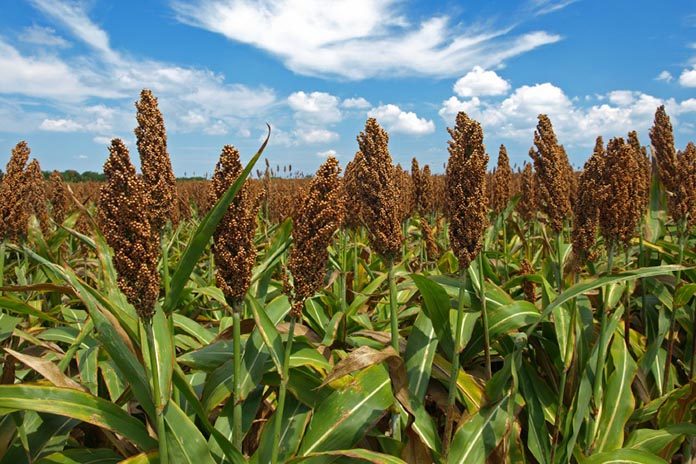
Sorghum is used widely in Australian poultry diets, primarily as an energy component. It is usually fed in diets that contain wheat but may be the only cereal in diets when wheat prices are high.
Feed ingredients with low amino acid concentrations and containing anti-nutritional factors have been reported to mask additivity in a complete diet. The presence of anti-nutritive factors (phytate, kafirin and polyphenols) in sorghum may have an impact on protein and amino acid digestibility and additivity.
In complete diets, sorghum is fed with a range of protein meals and the objective of this study was to determine if ileal crude protein and amino acid digestibility coefficients of mixed diets containing sorghum and different protein sources can be predicted from the values determined with individual feed ingredients.
Five mash assay diets containing sorghum (600g/kg) and one of the following protein meals (279g/kg); sunflower, soybean, canola, cottonseed or meat and bone meal, were prepared. Celite (20 g/kg), as a source of acid insoluble ash (AIA), was used as an indigestible marker in all experimental diets.
Each diet was fed to 3 replicate cages with 12 broilers per cage from days 14 to 23 post-hatch. On day-23, all birds were euthanised and digesta from the lower ileum were collected and pooled per replicate, frozen and lyophilised.
Nitrogen, amino acids and AIA in feed and ileal samples were analysed with standard laboratory protocols.
Digestibility coefficients of protein and amino acids of mixed diets were determined and calculated/predicted based on the digestibility value of individual ingredients.
The values for individual ingredients were determined in a parallel bioassay using chicks of the same age and methodology that has been described in detail. Individual amino acid digestibility coefficients and level contributed by each ingredient were used to calculate and predict the digestibility coefficient of protein and amino acids in the mixed diet. Predicted digestibility coefficients were subtracted from the respective determined values of each diet andtested for significance.
No significant difference was detected in the measured and predicted ileal digestibility coefficients of protein in any of the mixed diets. Determined and predicted ileal digestibility coefficients values of most of the amino acids were insignificant in the sorghum +sunflower meal diet except for lysine and tyrosine that were higher than predicted. In the sorghum +MBM diet the determined values were greater for Met, Ile, Lys, and Tyr and lower for Asp and Gly than their predicted digestibility coefficients.
The determined digestibility coefficient of all the amino acids was greater in the sorghum +canola meal diet except for Leu. Interestingly, the determined digestibility coefficients of most amino acids in the sorghum + cottonseed meal diet was lower than predicted values except Thr, Val, His, Ser, Gly and Tyr.
These findings demonstrate that, in most instances, individual amino acid digestibility of sorghum and a range of protein feed ingredients can be used to predict the amino acid digestibility of mixed diets containing these ingredients. However, the precision of additivity differed with different protein sources indicating some interaction of the protein source with sorghum.
References are available on request
From the proceedings of the Australian Poultry Symposium

















